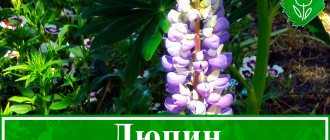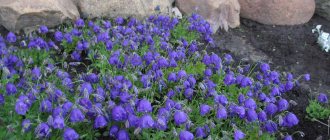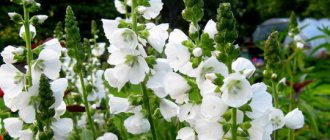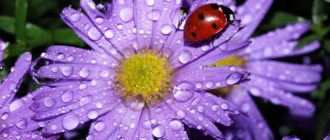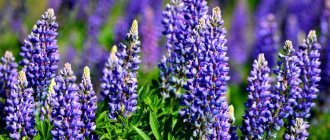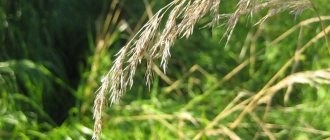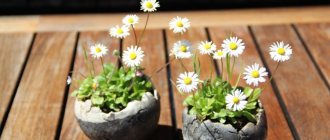Ursinia is an unpretentious plant that belongs to the Asteraceae family. Ursinia is native to South Africa. “Wedgewhisker” is how flower growers affectionately call the crop, and in America ursinia is known under the name “treasure of the fields.”
But no matter what it is called, the plant is very bright and elegant. The appearance is colorful, effective and catchy.
The plant can be either annual or perennial. Subshrub species are also found. The height can reach 60 cm. Ursinia has a stem that can be bare or covered with a small edge. Its peculiarity is that it has a pleasant aroma. The leaves have beautiful serrated edges. The color of the leaves is bright and rich, as if the plant was about to be watered. Visually they resemble carrot leaves.
The flowers of the crop are presented in baskets. Flowers bloom either one at a time or in groups. In the botanical sense, these are not flowers, but inflorescences, which consist of flowers with different structures. The flowers located along the edge are called reed flowers. They have a bright yellow or orange color. The color underneath is red-brown. The internal or tubular flowers are located in the central part of the inflorescence and are distinguished by their abundance, small size and pleasant aroma. They have a brown-copper color.
The main colors of the inflorescence are yellow, orange. Sometimes you can find white colors. Flowering is long and abundant. Starts in July and ends at the end of September.
Types and varieties
There are about 60 species in the genus. Since this is a southern flower, not all species can be grown in the middle zone. The following types are popular in culture:
- Dill;
- Multi-colored;
- Beautiful;
- Dwarf.
Dill (ursinia anethoides) is the most popular variety. This is a very large (up to 50 cm) plant with branched shoots. Grown as an annual. On high peduncles there are bright inflorescences, the diameter of which can reach 6 cm. The flowers are orange along the edges and darker inside. Despite the cloudy weather, the inflorescences will delight with their flowering. It continues throughout the summer. It is called so because the leaves are visually similar to dill leaves.
Photo of dill ursinia inflorescence
Multi-colored (ursinia anthemoides subsp. versicolor) is an equally decorative annual. Golden baskets rise on thin stems. The diameter of the inflorescence is about 5 cm. The leaves of this variety are very decorative. The reed flowers are golden in color, while the inner ones are brown.
Beautiful (ursinia speciosa) is a common species in floriculture. Its height is no more than 40 cm. It is grown as an annual. Yellow inflorescences with a golden hue, about 4 cm in diameter, bloom only on sunny days.
Beautiful
Dwarf (ursinia pygmaea) is a low-growing annual variety of ursinia. Its height is no more than 15 cm. The inflorescences have a rich orange color. The leaves and flowers are very decorative. Flowering is long and numerous.
Dwarf
Popular varieties of Ursinia
Ondine is one of the most common varieties. It is a herbaceous annual with highly branched stems. The inflorescences, located on long peduncles, are moderately large in size (about 6 cm in diameter). The marginal flowers are orange with a golden tint, and the tubular flowers are black. Ondine prefers sun and warmth and tolerates drought well. The variety loves fertile and loose soil. Ondine is often used by landscape designers in their compositions. It is great in group plantings, mixborders and rockeries. Produced by Sedek.
Undine
Aurora is another ornamental annual. Height no more than 40 cm. The inflorescences are very similar to the inflorescences of daisies. They have a bright orange color. The inner flowers are darker. The diameter of the inflorescence is about 5 cm. Aurora is grown in flower beds, used for planting in rocky gardens, as well as in hanging flowerpots.
Bright Orange is a colorful variety from. Has bright orange inflorescences. The leaves are very decorative. This annual variety produces numerous blooms all summer long. The diameter of the flowers is 6 cm. The height of the plant does not exceed 40 cm.
Transplantation into open ground
Ursinia does not require special growing conditions. But if you want to get abundant flowering, you will have to try . This plant thrives in warm, brightly sunny areas. But the requirements for soil quality are much lower.
It is recommended to use moderately nutritious or even poor soils. The best option would be sandy, well-drained soil. In some cases, it is recommended to add wood ash to normalize the acidity of the soil.
A sandy, previously empty plot is ideal for ursinia.
Ursinia does not tolerate heavy, clay or loamy soils. In this case, it is difficult to obtain abundant and long-lasting flowering. The plant is not at all afraid of wind and drafts. Even a windy, completely open area is suitable for growing it. For transplanting into open ground:
- First dig the soil deeply in the selected area.
- Dig shallow holes at a distance of 20 - 30 centimeters.
- Carefully remove the seedlings from the pots. Lower them into the holes, cover them with the removed soil and compact them.
Ursinia is a fairly hardy plant and does not require special care after planting. Simply watering the bushes is enough.
Growing from seeds
Like other annual flowers, ursinia is grown from seeds. At the same time, the persistence of the flower allows you to sow the seeds immediately in open ground.
Sowing of seeds must be done in late April and early May. Do not bury the seeds too deeply. The top layer of soil should not be more than 3 cm. You can even simply scatter the seeds over the surface of the soil. Both methods are equally good. In addition, the distance between sowings should be quite large - about 20 cm.
In order for ursinia to bloom earlier, you can grow it through seedlings. In this case, sowing the seeds must be done in March. The optimal temperature for germination should be about 18 degrees. Picking seedlings is done only once. You can plant seedlings in open ground in May, when the threat of frost has passed. The distance between them is about 25 cm. Before planting in open ground, it is better to harden the ursinia a little.
Germinating seeds for seedlings
Growing ursinia is accessible even to a beginner. It is completely undemanding in terms of care conditions. With the seedling planting method, germination should begin at the end of February or beginning of March. For this, it is advisable to use spacious containers. It is recommended to use a universal soil mixture for flowers as soil.
To germinate ursinia, you do not need to create an improvised greenhouse. It is enough that the room temperature is 15 - 20 C. See an example of building a simple country greenhouse from plastic bottles here.
To germinate seeds for seedlings:
- The containers are filled with soil.
- The seeds are simply scattered over the surface of the soil and then lightly pressed into it. You can sprinkle them with pre-calcined river sand.
- After 2–3 true leaves appear, the seedlings are planted in separate pots.
Young plants do not require pre-hardening due to their resistance to temperature changes.
Watering should be done sparingly as the soil dries.
Planting Ursinia
The crop is planted in open, sunny and warm areas. This is due to her love for warmth and light, because she comes from the southern regions. In order for flowering to be rich and abundant, the plant must be in the sun for about five hours a day.
The soil for the plant should not be too rich in nutrients. Poor and moderate soils are suitable. The ideal soil for ursinia is sandy. The soil must be well drained. Heavy and clayey substrates are not suitable for this crop.
The wind is not afraid of ursinia, since its stems are quite strong. But she can’t stand the shadow. Before planting, the soil must be dug up.
Pests and diseases of Ursinia
In general, Ursinia can be considered a fairly persistent flyer. When plantings are dense and waterlogged, neighbors affected by powdery mildew pose a danger to this plant. But among the pests, aphids most often settle on ursinia.
If problems arise, fighting is useless; it is better to wait until flowering is complete and throw away the plant than to spray the bushes with insecticides for a long time and unsuccessfully. It’s better to spend time preventing infection of neighboring crops.
Ursinia nudicaulis. © faroutflora
How to care?
This culture is unpretentious. Even the most inexperienced gardener can grow this plant. Ursinia will grow without any care. However, in order for flowering to last longer and more abundantly, some rules will have to be followed.
During dry and hot weather, the flower requires watering. It should not be very frequent and abundant. The plant does not like stagnant water and too high humidity in the soil.
Once a month or a little more often, the flower needs feeding. This is due to the fact that the flowering is numerous, and the inflorescences are very large. Standard mineral fertilizers are suitable as fertilizing. You can apply subcortex when the buds are forming, as well as approximately in the middle of flowering.
Since the shoots branch very strongly in different directions, unnecessary and wilted ones can be periodically pruned. Pruning will help give the plant a neat and compact shape.
The crop is rarely affected by any diseases or pests.
Ursinia care in the garden
Ursinia dill Solar Fire Ursinia anthemoides 'Solar Fire' photo
The flower, the treasure of the fields, is unpretentious in care. It can be grown by beginning and inexperienced gardeners. An additional advantage is resistance to pests and diseases. In nature, the plant survives in conditions of heat and drought without human intervention. To ensure that the Ursinia plantings on the site are lush and blooming, you should try a little.
At first, the seedlings are watered moderately until they take root: the branches become elastic, the leaves stop drooping. Then the plant has enough natural precipitation; the soil will only need to be moistened during severe, prolonged drought.
Initially, moderately nutritious soil is chosen for planting. Numerous, regularly appearing large inflorescences take a lot of energy from the plant. It is important to feed ursinia during the period of bud setting and at the height of flowering. In principle, you can apply complex mineral fertilizers for flowering plants once a month.
Pruning helps keep the bush neat and tidy. The stems can branch very strongly and stick out at random - remove ugly or weak ones, you can also cut off wilted inflorescences.
Application in landscape design
This culture is widely applicable in landscape design. It is used in:
- Alpine roller coaster;
- Compositions from annuals;
- Group flower beds and mixborders;
- Single landings;
- Curbs.
Ursinia is also grown as a cut flower because it is great in bouquets. It is advisable to cut flowers when the buds have not yet bloomed. They bloom beautifully in water. In addition, the plant is grown in hanging pots and flowerpots, in balcony boxes, in pots on terraces and loggias.
Ursinia goes well with many annuals and perennials that have bright colors. Ideal partners would be:
- Lobelia;
- Blue cornflowers;
- Iberis white;
- Red dahlias.
Reviews
Most of the reviews about this plant are positive.
For example, the author, an experienced gardener, talks on one of the forums about the unique effectiveness of ursinia, extolling it over daisies and asters. The core of the flower, which is of a dark, rich color, gives the plant an unusual decorative effect. However, the author also writes about the difficulties of growing the crop due to poor seed germination. However, the reason may also lie in the quality of the purchased seeds. The plant is very thermophilic and loves the sun.
Another author, on the contrary, writes about the ease of growing it, noting its striking appearance. All the plant needs is sun and moderate watering.
Botanical description and homeland of the plant
No matter how much we admire roses and similar beauties, it is difficult to resist the tenderness and simplicity of flowers similar to daisies. Ursinia is an unpretentious summer plant for the garden (there are perennial species, but in the conditions of central Russia only seasonal cultivation is possible). The culture comes from South Africa. Gardeners have noticed elegant, eye-catching bushes for a long time and lovingly call the plant wedge-shaped. In America it is known as the “treasure of the fields” - the petals are yellow, orange-golden.
- Ursinia belongs to the Asteraceae family and its basket-shaped inflorescences.
- What are visually perceived as petals, from a botanical point of view, are reed flowers, and the core consists of numerous small tubular flowers; they have a delicate scent.
- The base of the reed flowers and the surface of the tubular flowers are of the same chocolate shade, followed by a uniform yellow or orange color.
- On the reverse, the “petals” are red-brown. The white-flowered form is extremely rare.
When does Ursinia bloom?
Ursinia is distinguished by its tireless, abundant flowering. The corollas bloom in July and are regularly renewed until the plant dies from autumn frosts.
Ursinia grows as a subshrub with a height of about 0.6 m. It branches, the stems and shoots are bare or covered with short fibers. Together with the leaves, they have a herbaceous-tart aroma. In structure, the leaf blades resemble carrots: dissected, with beautiful jagged edges, green in color of varying saturation, matte or shiny, as if they had just been poured with water.
Most reviews about growing ursia are positive. Gardeners admire the beauty of flowers that can outshine the beloved daisies and asters. The more saturated color of the core contrasts with the warm yellow-orange petals. Some note poor seed germination. Perhaps the reason lies in their poor quality. To grow successfully in a flower bed, plants need warmth and plenty of sun.


